Nicaragua Canal Environmental Assessment Criticized As Scientifically Weak, Technically Inadequate
Expert panel finds “scientifically indefensible” conclusions in 14-volume study.
By Keith Schneider
Circle of Blue
On Sunday evening, May 31, executives of Environmental Resources Management, a British research consultancy, joined the principals of the HKND Group, a Hong Kong-based development group set on building a canal across Nicaragua, in a private ceremony in Managua. The event was held to formally submit a 14-volume study to Nicaraguan authorities on the environmental and social consequences of constructing a new and mammoth shipping corridor across Central America.
The following day, in a made-for-television press event, a copy of the 14-volume Environmental and Social Impact Assessment of the proposed Nicaragua Canal was displayed on a small table for news photographers. Though the study is not available for public review, ERM and HKND executives joined government authorities in asserting that the canal construction is safe and feasible, and they defended the quality of the environmental assessment, which the government and HKND say is central to the case for starting excavation, perhaps before the end of the year.
“The purpose of the study is to provide an objective, current assessment based on science,” Manuel Coronel Kautz, the president of Nicaragua’s Grand Canal Authority, told reporters.
Edwin Castro, a senior Sandanista official, added that “this is the work of more than two years by ERM, with all the scientific means and serious business of ERM.”
The quality of ERM’s data, though, and the accuracy of its conclusions about the potential harms from canal construction and operation, are not nearly as airtight as Nicaraguan authorities and HKND affirm. In March, ERM invited 15 environmental scientists and project experts to Miami to spend two days reviewing four chapters of the environmental assessment. In an 11-page evaluation obtained by Circle of Blue, the panel’s members concluded this spring that ERM’s environmental study is rife with significant flaws.
Review Panel Finds Weak Science
Panel members expressed frustration at what they said was insufficient data collection on water quality, geology, sediments, species, erosion, and fisheries. They complained about the pedestrian quality of ERM’s analysis of the data that it did collect. At various points in their report, the panel castigated ERM for what they called “indefensible,” “implausible,” “wrong,” and “not realistic” scientific conclusions.
The special panel’s members, most from U.S. universities, also raised penetrating questions about whether building and operating the proposed $US 50 billion, 278-kilometer (173-mile) canal is even feasible. The gravest areas of concern, said panel members, involved understanding the geology beneath Lake Nicaragua, the disposal of 1.1 billion metric tons of silt that would be dredged from the lake for shipping channels nearly 28 meters (91 feet) deep and up to 520 meters (1,700 feet) wide, and whether there would be sufficient supplies of water to operate two sets of locks in the event of deep and prolonged droughts that are anticipated in the region due to climate change.
“It seemed to me that the environmental impact assessment process was to create the illusion of science,” said Michael T. Brett, a professor in the Department of Civil and Environmental Engineering at the University of Washington in Seattle, during an interview with Circle of Blue. “I had the impression that most of the sections presented to us were of the quality of a weak Master’s thesis at any major research university. We kept asking, ‘Couldn’t this have been done better?’ It’s not very good work.”
Panel members also said in interviews that they wondered if the study’s weaknesses would jeopardize ERM’s global reputation for thorough and first-rate work.
When asked about that concern, David Blaha, a principal partner at London-based ERM, emailed this response to Circle of Blue:
“As you may know, ERM sponsored the expert panel. We did not need to do this but we believed a project of this magnitude deserved this level of review. ERM was very appreciative of the comments we received from the panel and we responded to all of their comments in the Environmental and Social Impact Assessment (ESIA). We believe the ESIA is a robust document and objectively evaluates the effects of the project. I encourage you to review the ESIA (or at least the executive summary), once it is available, before reaching any conclusions about the document.”
ERM Responds
Circle of Blue also obtained a copy of ERM’s 16-page response to the special panel, which is the only portion of the 14-volume study that has been made public. In its response, ERM generally agreed with the weaknesses in the work that the panel illustrated and said that some analysis had been reworked.
In most cases, said ERM, the tight two-year deadline for completing the assessment for HKND meant its researchers often did not have sufficient time to conduct more thorough data gathering. ERM recommended that HKND and Nicaragua authorities pursue research that responds to the concerns raised by the special panel and by several other science and environmental organizations, which have produced evaluations that are critical of the potentially grave consequences to water, forests, coastal regions, wildlife, and human communities from building the canal.
As proposed by HKND, the Nicaragua Canal would be more than three times longer than the Panama Canal; include two sets of monumental locks, larger than those currently under construction at the Panama Canal; require the construction of a 395-square-kilometer (152-square-mile) artificial lake; and force thousands of people from their homes.
As noted in the special panel’s report, the entire corridor proposed for construction — and the coastal marine environments in close proximity to the canal’s Pacific and Caribbean entrances — supports strong fisheries, is a storehouse of exotic tropical plant and animal species, and is home to dozens of indigenous human communities.
Safety of Canal Project Far From Assured
The panel found that the four chapters of the environmental assessment they reviewed contained what members called “limited” data on forest habitat and other essential resources that would be affected by the canal.
“We were most concerned about the lack of information collected and presented,” said Sudeep Chandra, an associate professor of biology at the University of Nevada in Reno, during an interview with Circle of Blue. “It wasn’t just about the impact on the environment. It’s also about the feasibility of the project. There didn’t seem to be enough due diligence to see whether the project was even feasible. We were just so surprised by the lack of response to each of our points. I would suggest it is one of the most mismanaged environmental reviews I have ever read.”
One of the panel’s deepest concerns is the safety of Lake Nicaragua, Central America’s largest lake and a relatively shallow, clean, and oxygen-rich source of fresh water for thousands of people and a thriving fishery. HKND proposes to cut a 105-kilometer (40-mile) channel across the lake so deep and wide that it would require a wet-excavation project of silt and mud five times larger than constructing the offshore airport in Hong Kong, which is the largest such wet-excavation project ever conducted.
HKND proposes to build three islands in the lake to dispose a portion of the dredge spoils. The rest would be dumped into the lake to settle to the bottom in 3-meter-tall (9-foot-tall) berms that would run the length of both sides of the dredged channel.
The panel found that the data for understanding the consequences on fisheries and water quality from dumping that much fine silt into the lake was “limited.” That did not stop ERM researchers from arguing in their draft environmental assessment that “the magnitude of the impact is considered small.”
The 15-member panel found that conclusion absurd.
“This finding of moderate significance of dredging impact simply is scientifically indefensible,” the panel concluded in their report. Pouring so much fine silt into a shallow lake would cloud the water, cause oxygen-starved conditions, introduce nutrients that lead to dense algae blooms, dramatically damage the lake’s important fisheries, and seriously degrade the lake as a source of drinking water.
“This fine-grained clay will likely have a large impact on the in-lake sediment disposal plan and result in severe water quality impairment,” said the panel report.
Sea Turtles At Risk
The panel also criticized ERM surveys of existing plant and animal life in the canal corridor, calling the consultancy’s data gathering “brief and incomplete.” Panel members noted that little attention was paid by ERM researchers on the effect that the canal would have on the ability of animals to migrate freely, because the proposed canal would form a new terrestrial barrier.
Another of the panel’s concerns was large gaps in the environmental subjects that ERM researchers chose to address. For instance, ERM did not consider the canal’s potential to affect the Pacific Coast of Nicaragua, which is one of the world’s most important habitats and nesting beaches for four of the seven species of sea turtles.
The Nicaraguan government has not made the ERM study public, nor has it indicated when it will do so. Panel members said it is imperative that the 14-volume study be available for public review.
“That is the most urgent short-term concern with the process,” said Ryan Stoa, a lawyer and senior scholar at Florida International University who helped to organize the independent review panel. “The government is holding it back. It’s hard for anyone to judge the merits of the study without seeing the research in its entirety. It’s troubling for us that the government has not publicly released the report or even indicated when they will do so. While the science we reviewed was problematic, I expect the final ESIA will raise serious concerns about the impacts of the canal. It’s imperative that the public have access to that research sooner rather than later.”
“It’s safe to say that all of us are very concerned about the potential environmental impacts of a project of this scale,” added Adam Henson, a member of the panel and technical director with Fauna & Flora International, a respected international conservation organization that has worked in Nicaragua since 1998. “We are most interested in a scientifically robust, publicly transparent environmental assessment process. At this stage, we hope the ESIA will be released for public comment to ensure a robust scientific review and wide consultation with the Nicaraguan scientific community and civil society in general.”
Circle of Blue’s senior editor and chief correspondent based in Traverse City, Michigan. He has reported on the contest for energy, food, and water in the era of climate change from six continents. Contact
Keith Schneider

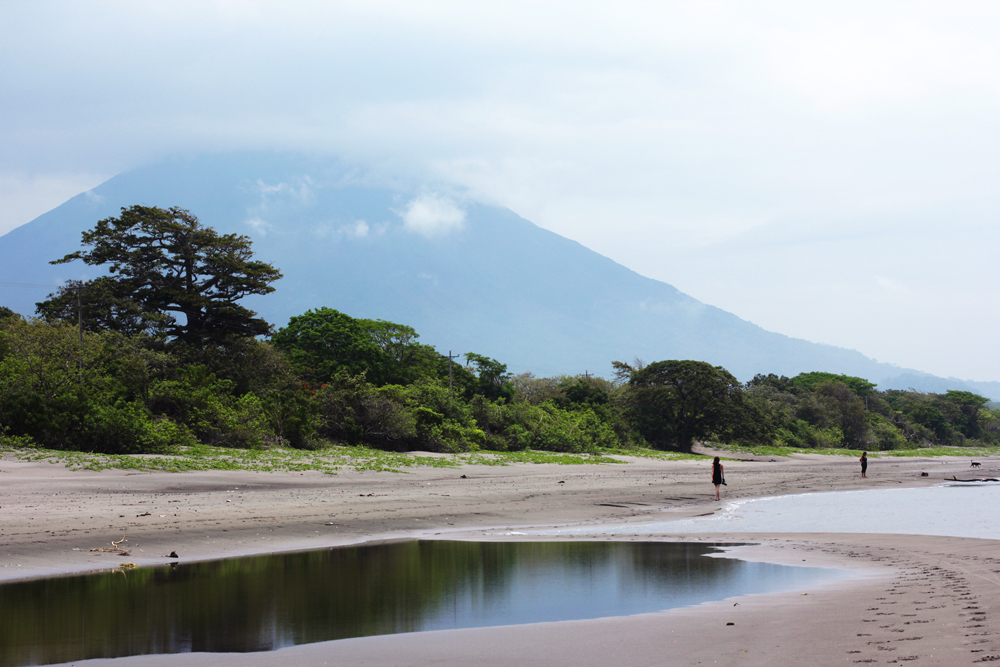
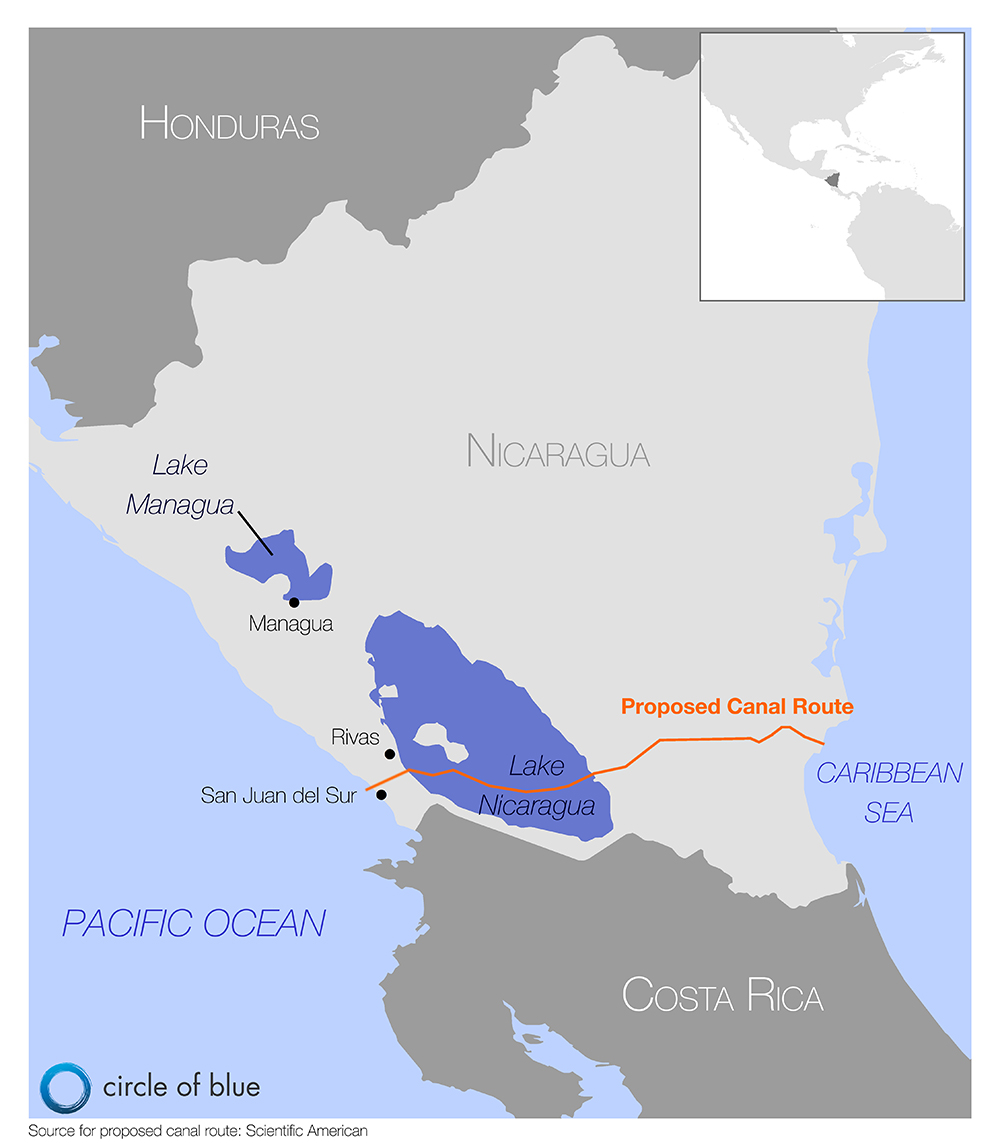
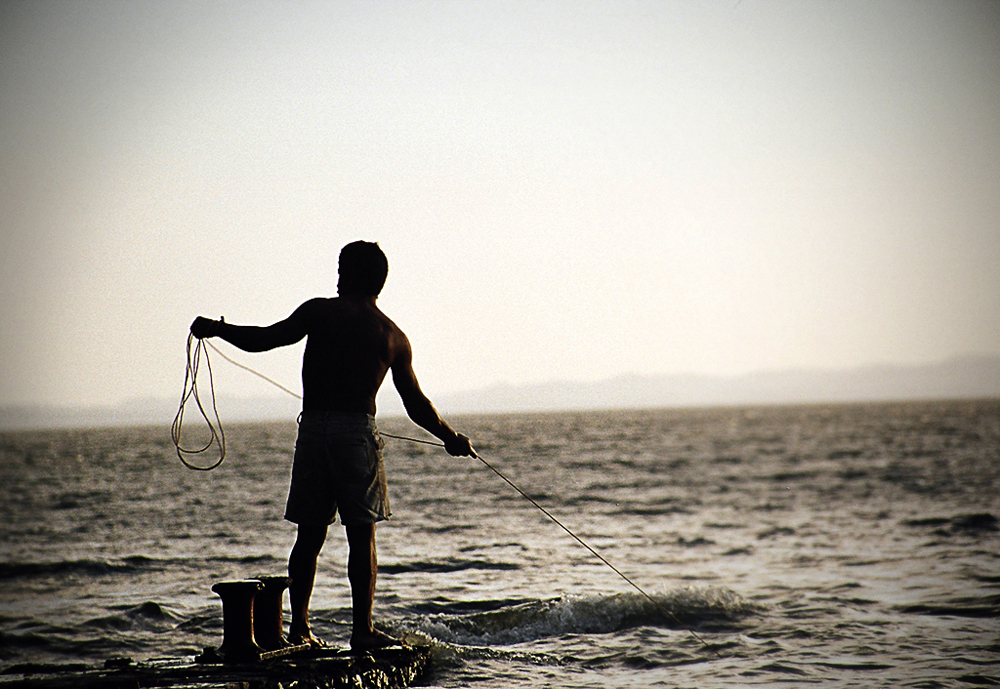
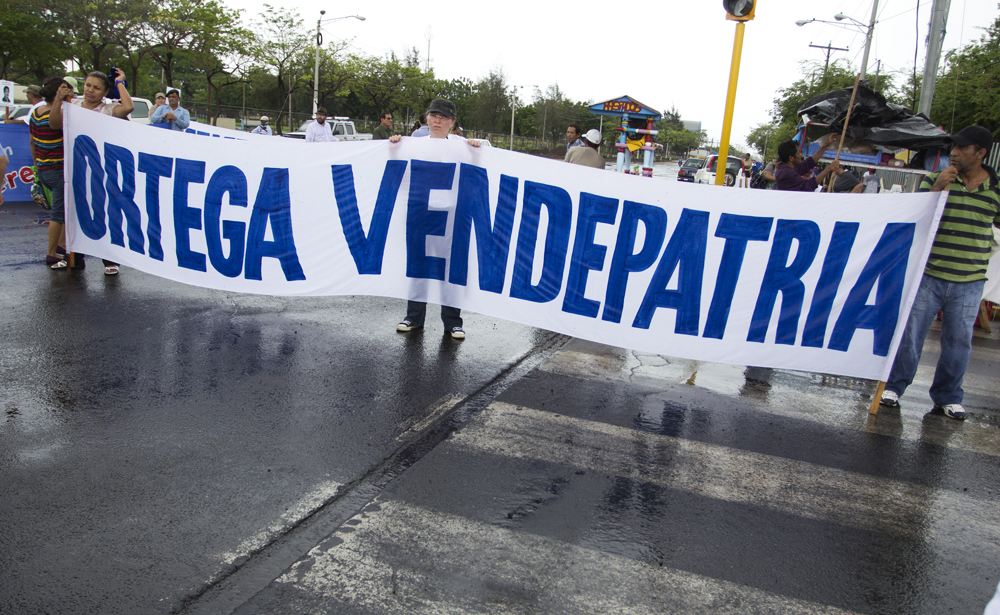
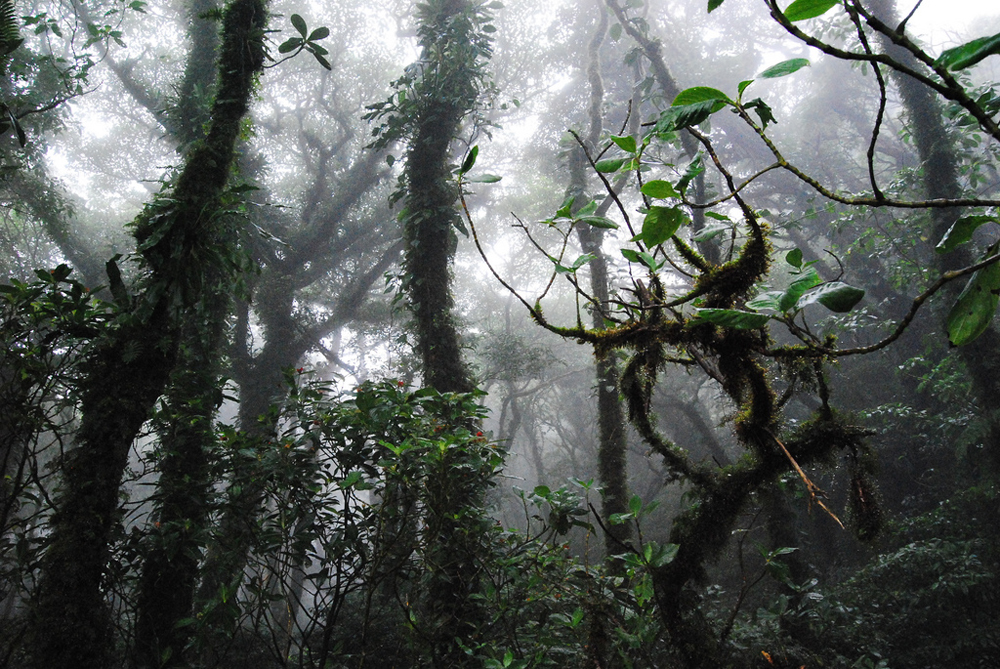
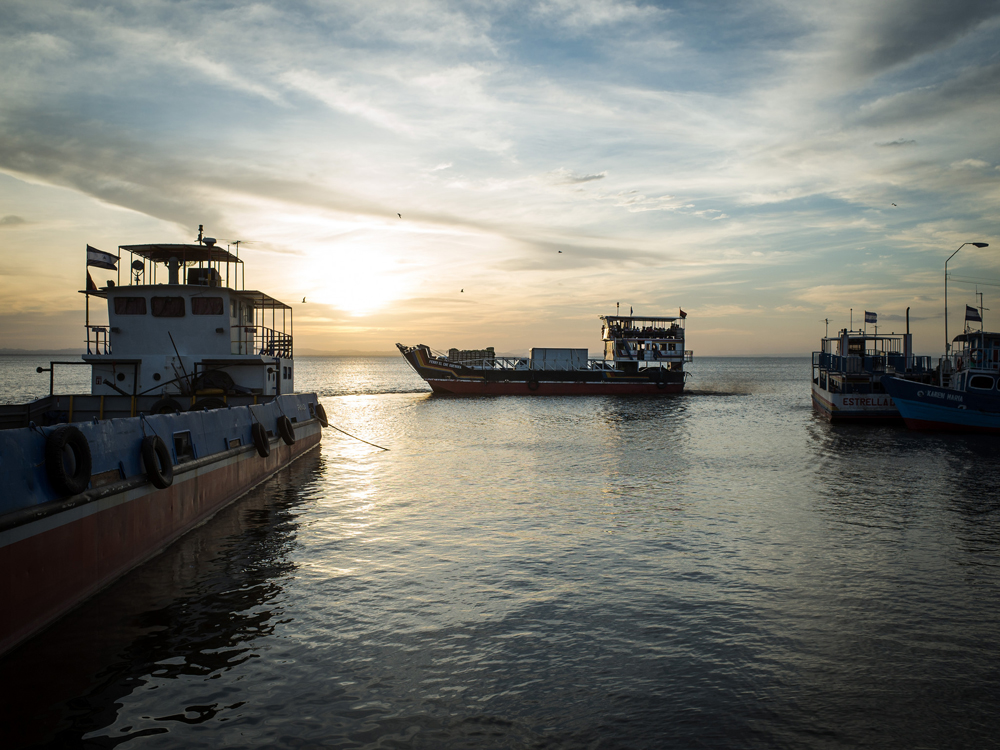

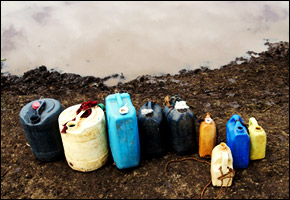
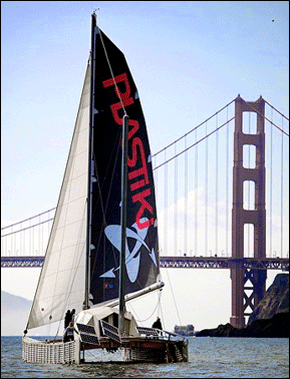
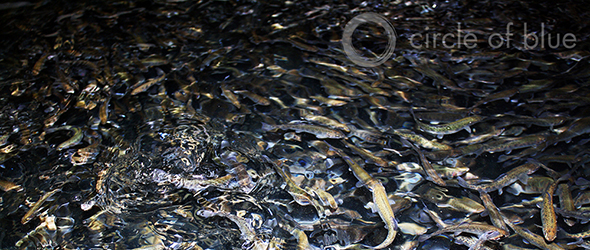

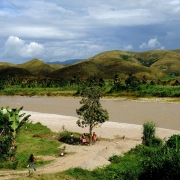
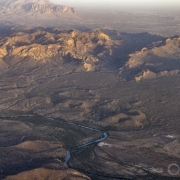 © J. Carl Ganter / Circle of Blue
© J. Carl Ganter / Circle of Blue 


Good news is not kept secret. This is a dangerous gambit by Ortega and the fsln… It’s good news for the opposition. We live in a new age of communication and education. These are not the same uneducated peasants of 1978. The people will not tolerate govt. by decree any longer.
They will fight.
you had better believe they will fight already throwing rocks at any and all little D**k GD chinks they all need to leave Centro America I have been Asia also arrogant real racists POS it will NOT be built I assure you
Please save the Nicaraguan Lake from destruction and the sick ambitions of the Ortega / Murillo family. I do not see a list of shipping companies requesting a canal of such magnitude. We already have more than 30 rivers completely dry during the dry season in Nicaragua, so many others very polluted and the last big reservoir of fresh water in Central America in danger of being destroyed by a Chinese billionaire.
Wake up Nicaraguan people before is too late to stop this mega-project that is going to displace thousands of farmers and Indigenous communities from their ancestral land and destroy the way of way life in and around the Nicaraguan Lake.
Take a look at National Geographic Magazine from 1898 and the articles about the environmental assessment which was done the with the prospect of building a canal along the Rio San Juan. The project was not found feasible. The best option was Panama. It seems to me that the studies from 1898 were more serious and public than this time around. The presentaton of this impact study is yet another evidence that the entire canal Project is a fraude and that unfortunately a large number of Nicaraguans are made to believe that the Project is the solution to prosperity. It will probably be profiitable for a few property speculators
wow very interesting article I really hope they dont destroy our beatiful Nicaragua….!
Please see video about Nicaragua Canal project: https://www.youtube.com/watch?v=QEOqJcIpMz0
Here in Spain, we are also very concerned about the construction of this mega-canal, that we think it would be unviable from every point of view.
The International Scientific community has to give more support to the Nicaraguan Scientists that, in several occasions, pleaded for support in “Science” and “Nature” editorials.
Although I am aware that the building of such an absurd project do have geopolitical consequences, and is used by powers to manipulate the view of the people, we, as a Scientists, should just to be concerned about the severe and irreversible damage that this canal would cause to all those ecosystems.
Direct consequence of losing such a marvelous biodiversity ( it seem a sacrilege) would have an strong impact on the Economy over all Centroamerican area, causing a huge movement of natives and their lands.
In an era of global warming not possible to deny anymore, when the major threat is, already, the availability of safe drinking water, it is clear that any serious “Environmental Resource Management” corporation, would not lend itself to produce a favorable report on that kinf of brutal projects. Far less in an area of special seismic and volcanic risk, as we know was the cause for discarding the previous Nicaragua Canal Project a century ago.
Re the June 5 comment of “SenorPescador Johnson”:
Racist epthets and racial prejudice have no place in this discussion. They are morally repugnant and must be condemned for that alone. Anti-Chinese racism also serves those who would promote the canal by discrediting its opponents. If “SenorPescador” is not consciously in the service of such people, he might as well be.
IT is clear that ESIA is a fantasy of ERM consultancy….better is a greenwashing scandal